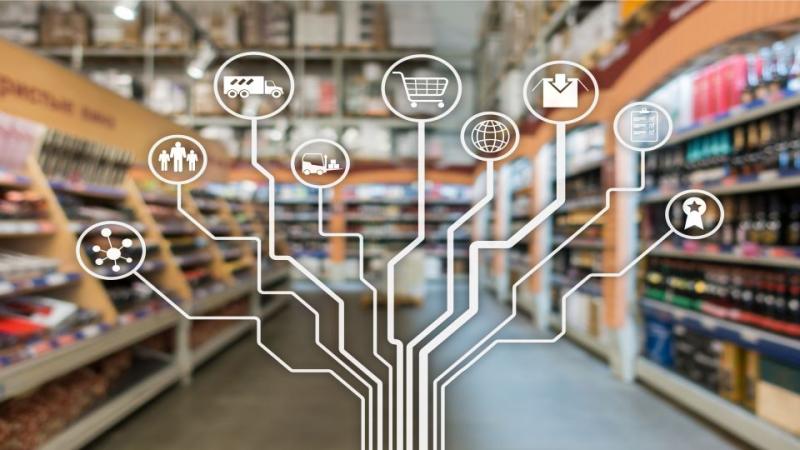Expand Retail Channels to Unlock Revenue Growth
Retailers are facing higher commodity prices and resulting price increases across most product categories. While sales are up, most of the gains are inflation-driven versus actual volume. Demand is flat or decreasing for traditional retail commerce. In fact, with revenue growth expected to be 5% while inflation estimated at 6.4% in 2023, retailers are expected to see profit margins narrow.
With this challenging business climate, retailers are devising new business models and executing strategies to diversify their revenue. The hottest revenue generator in 2023, for instance, is the establishment of retail media networks (RMNs) to engage with consumers digitally and enable brands to employ more precise and measurable marketing efforts.
To continue to grow profitably, retailers need to unlock new revenue opportunities.
Weighing Options for Growth
There are several avenues to go down to expand revenue through digital transformation. Companies might sell data to brand partners; this is particularly applicable to retail media networks (RMN), valued globally at around $100 billion. While advertising in a digitally precise way to consumers is appealing to brands, much of the revenue from RMN will be sourced from the top retailers.
A similar way of using data to drive more revenue is the concept of sharing performance and consumer data that is not necessarily tied to the brand’s marketing activities. This research can help brands and partners understand who the consumer is using retail, product performance, and even traffic patterns in store. The benefits of selling performance and consumer data and RMN programs is that they are much higher margin than traditional brick-and-mortar or e-commerce.
Another option is to grow the business ecosystem in non-traditional ways, catering to consumers by offering new digital or other types of services. More retailers are expanding into financial products such as credit cards or even different types of insurance or travel services. Petco, for instance, has expanded its strategy to become a health and wellness pet destination for pet owners, now offering more veterinary services and pet insurance to provide that encompassing experience and becoming a one-stop-shop for pets.
Other retailers have initiated non-traditional ventures to expand on their mission. CVS recently closed on its purchase of Aetna health insurance, which further expands CVS’ business into healthcare to include retail, pharmacy, distribution, and health insurance. Lululemon, a leader in athletic apparel, expanded into home fitness with its acquisition of the Mirror, a digitally enabled home fitness equipment. The acquisition of Mirror opens up opportunities for the retailer to understand fitness class preferences and advertise and sell directly on the equipment in a more personalized way.
Expand Assortment and Channels
While both strategies above are exciting and can likely drive tremendous revenue in the long term, they require new talent and large investments in technology and even acquisitions — and may not be realistic options for many retailers. Not all high-profile strategic moves succeed, and they can be financially risky.
A more linear approach to growing retail businesses is expanding the business opportunities but with a new approach and capabilities. This category of growth includes expanding markets geographically, finding new channels, reaching new customers, and expanding assortment. While all of the revenue opportunities have a potential to increase customer loyalty, expanding assortment and expanding channels may be the most relevant way to increase loyalty and share of wallet from a traditional retail commerce. It also may have the more direct route to ROI.
It’s the Year of Doubling Down on Customer Loyalty
In this climate of inflation, geopolitical tensions and various health crises. retailers are increasingly focused on building customer loyalty vs. acquiring new customers. Building unified commerce success is arguably the most focused way of building customer loyalty. The 2023 Global Customer Loyalty report from Anatavo confirmed that retention is key this year as almost 94% surveyed agreed that it should be the primary focus.
With persistent inflation, many customers are evaluating their purchases and respective value of every purchase and every item, so it is important for retailers to focus on retention and increasing share of wallet. By prioritizing the growth of multiple channels and offering a relevant and extended assortment and even extending commerce to B2B customers, retailers are further leveraging their existing core capabilities but must be prepared to acquire and manage a greater variety and volume of data.
— Brian Cluster, Stibo Systems Director of Industry Strategy, CPG & Retail






